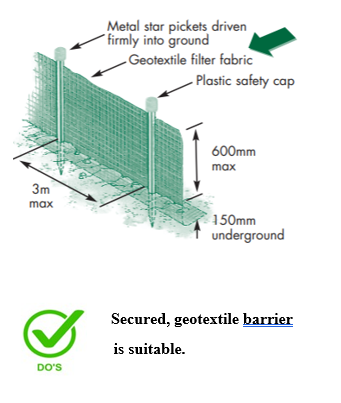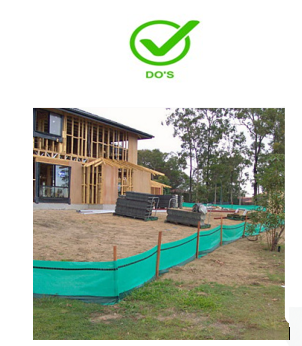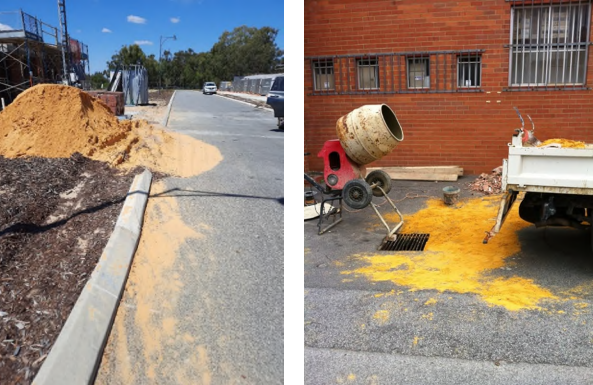Managing Sand During Construction in the Shire
Property owners, builders and developers are required by the Shire's Local Law to take effective measures to stabilise dust and sand drift and ensure that dust or sand is not released from land under their control.
Should effective measures not be taken and/or sand escape properties, the Shire's Compliance and Enforcement Policy is applied and penalties including infringement notices apply.
What happens if dust and building waste is not managed effectively?
Dust and building waste materials can cause significant health nuisance to neighbouring properties including damage to private property, landscaping, pools, vehicles and air conditioning. The costs associated with remediation of the impacts of dust and sand drift can be considerable.
Dust and building waste materials can also enter local drainage systems and waterways. This reduces the capacity of the stormwater system due to blocked drains and reduced size of collection basis which can lead to localised flooding. Negative impacts of sediment can also cause harm to fish, aquatic life environments and nutrient enrichment/eutrophication of rivers and wetlands, depleting the water of oxygen and excessive growth of algae.






Guide to Effective Building Site Dust Fencing
The most efficient and widely accepted sand and dust barrier for construction sites is a geotextile dust fence. Dust fences, when used correctly, are an effective way to retain sand and other building materials on site. The most efficient barrier for sand and dust is manufactured geotextile material. It is advisable to use geotextile material of high quality woven material with UV inhibiters for durability. A dust fence is simple to construct, relatively inexpensive and easily moved as development proceeds. On small-frontage sites with limited access, use steel posts and wire-tied fences that can be readily unhooked for access. A barrier is generally required on two sides of the site to prevent the escape of sand.



- Construct dust fence as close as possible to follow the contours of the site.
- Drive 1.5 metre long posts into ground, maximum 3 metres apart.
- Staple to 40 mm square hardwood posts or wire tied to steel posts.
- Dig a 150 mm deep trench along the up-slope line of the fence for the bottom of the fabric to be entrenched.
- Backfill trench over base of fabric and compact on both sides.
Guide to Storing Stockpiles on Site
- Stockpiles should be placed wholly within the construction site, where possible, and away from the sediment control
- Any spillage on the road or verge should be cleaned up at the end of the day.
- Stockpiles of sand, soil or cement should be covered securely at the end of each day if excessive wind or rain is likely.





Guide to Minimise Site Disturbance
A carefully designed and an efficient construction sequence can minimise disturbance to the site, save money, and reduce environmental impact:
- Avoid building activities that will disturb the site during periods of expected heavy wind or rainfall.
- Limit the amount of material on site to what is required at any one time.
- Ensure all material is immediately removed from the site at the completion of work.
- Instruct site workers and contractors on the need to prevent materials from washing or blowing into the stormwater system.
- Restrict vehicle access to one entry/exit point where possible
- Stabilise the access with coarse gravel. This will minimise the transportation of sand onto public roads and will help maintain the site in wet conditions.
- Ensure all trucks, utilities and trailers carrying sand is covered and adequately secured to prevent drift during transportation.